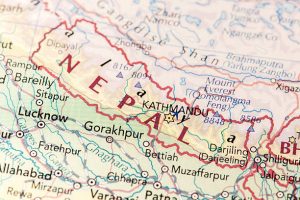Self-organizing maps (SOM) are unsupervised maps used in neural networks. SOM is a powerful software tool to visualize high-dimensional data and convert complex data into simple relationships. These maps are essential in building two-dimensional maps to solve some problems, which helps reduce the data dimensions of a data. This article will discuss the applications of self-organizing maps in solving real-life problems.
They include:
1. Visualization
Visualization is a vital task in analyzing and presenting datasets. SOM maps help visualize the high-dimensional dataset to a more straightforward dataset with lower dimensions. Data with lower dimensions is more specific to visualize than the dataset with high dimensionality. Therefore, by generating Self-organizing maps, the process of visualizing the dataset is eased.
2. Data Analysis
In data analysis, we perform operations such as cleansing, transforming, and inspecting the raw data. However, data analysis supplements other tools and techniques to achieve its tasks. One of the most excellent tools used in data analysis is the Self-organizing maps. In this context, the SOM maps help reduce the dimensionality of the data, and this promotes data analysis operations.
3. Clustering Analysis
In neural networks, clustering analysis is a vital component. How could this section of the neural network survive without Self-organizing maps? In clustering analysis, the SOM maps are essential in grouping objects into clusters and groups. As a bonus, this technique yields data with lower dimensions.
4. Meteorology
Meteorology is a branch that deals with weather forecasting. To execute its tasks effectively, this branch of science employs SOM to analyze and group spatial datasets. The collected information can be used to predict atmospheric effects and weather changes.
5. Dimensionality reduction
Self-organizing maps, as the name suggests, they are maps that organize a given dataset. These maps take datasets with high dimensions and yields two-dimension dataset. Reducing the dimension of the dataset eases the mapping process onto the plane surface.
6. Data interpretation
Data interpretation increases the usability of a dataset. Therefore, data interpretation may refer to using different tools to examine and survey the dataset. The SOM is a vital analytical tool that can be used to interpret the data. Thus, this technique helps researchers to manipulate and categorize the dataset.
7. Data Mining
Data mining greatly relies on Self-organizing maps. In this field, data miners extensively use the technique of self-organizing mapping to analyze the dataset. It is used to find datasets’ patterns, anomalies, and correlations.
8. Inspect large dataset
When working on a large dataset, you are likely to experience several challenges. Therefore, you need to scale down your dataset to ease your operation. Several tools and software that can be used to scale down the dataset but use SOM stand out. SOM helps reduce the dimensionalities of a large dataset, thus easing the inspection process.
9. Ordering multi-dimensional data
Ordering of data is a critical component in analysis. When working with multi-dimensional datasets, you can use the technique of SOM. The SOM technique helps in ordering data in two dimensions, which is simpler to understand and analyze.





